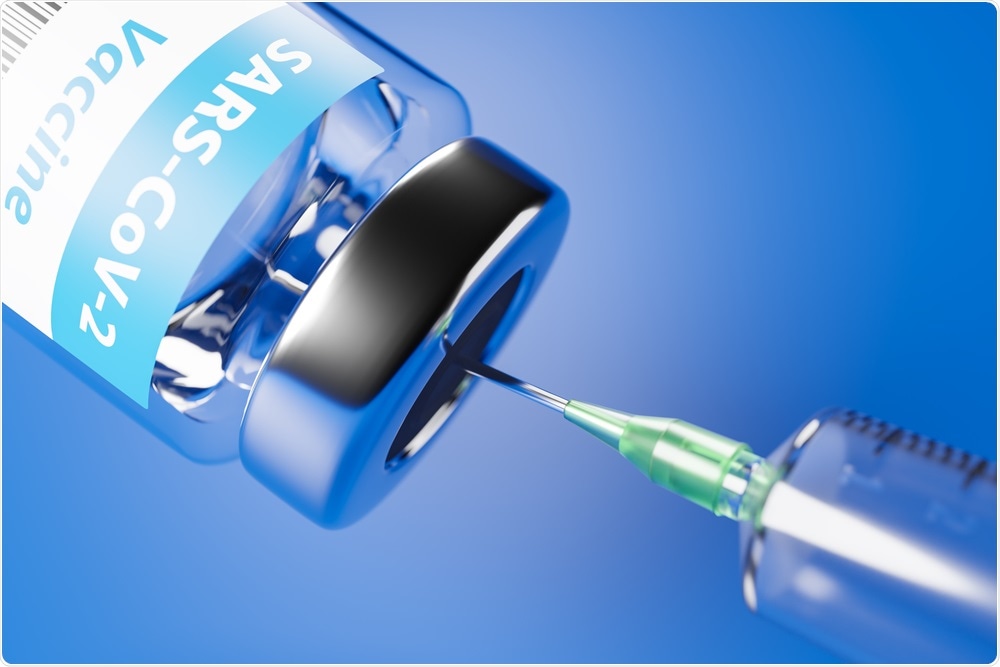by Dr Clare Craig and Dr Andrew G. Bostom

There are now 1160 reports of myocarditis and pericarditis after Covid vaccination in the US Vaccine Adverse Event Reporting System (VAERS). The total could be significantly higher due to latency in reports being processed. Myocarditis is a serious condition associated acutely with fatal arrhythmias, and chronically, because myocytes are irreplaceable, with heart failure and significant associated mortality. The rate of myocarditis/pericarditis reports post-vaccination has historically been low. For the 28 years from 1990 to 2018, during which there were close to three billion vaccinations for influenza alone, there were 708 such events reported in VAERS.1 Using methodology described by Su et al,1 to search the VAERS database,2 the 1160 myocarditis/pericarditis cases occurred in only six months, during which a total of around 150 million people had Covid vaccines, mostly mRNA and excluding lagged reporting.
There are understandable caveats about attributing ‘causality’ to VAERS adverse events associated with vaccination,3 however the numbers of adverse events are likely to be underreported.4 As the aetiology of Covid vaccine-induced myocarditis is new it may be unwise to extrapolate the prognosis from what is known about myocarditis due to other aetiologies. However, it is worth noting that 3-4% of those with acute myocarditis require heart transplantation.5 The overall mortality rate after one year was 20%6 and after five years 44%7 to 56%.6 Of the 1160 reported incidences after Covid vaccination, there have been seven deaths so far with three in under 60 year olds.
Of the myopericarditis cases in under 30 year olds, 496 have an ejection fraction recorded in VAERS. Of these 52 were graded as “decreased” and 36 graded as “normal”. At a minimum, therefore, more than 10% have at least transiently decreased ejection fractions indicating measurable damage to the myocardium. A low ejection fraction has been associated with major adverse cardiac events.8 The transplantation rate is as high as 11% within the first year in those with complications.9 A case report of post-vaccination ‘mild’ myopericarditis in a 16 year-old initially admitted to the intensive care unit, and hospitalised for six days, revealed that he had myocardial fibrosis.10 His troponin levels were high enough to predict a tenfold increased risk of mortality.11
The FDA has expressed concerns around the rate of reported myocarditis within the VAERS reporting system, especially in the young. A presentation by the FDA on June 10th 2021 compared the reported rates of myocarditis with background expected rates, with data up to May 31st 2021.12 However, the expected rates to which observed rates were compared were those expected over a 31-day period. For under-18s, 90% of cases had an onset by day five after vaccination, making comparison with expected rates over 31 days unreasonable. A further meeting on June 23rd 2021 examined the reports in a seven day window with data up to 11 June 2021. A four fold increase above baseline was evident in the seven days after the first dose for under-24 year-olds, rising to over 27-fold for the seven days after the second dose. The rate per million doses given in males 12-17 years old was 17 times higher than in men aged over 50 years seven days after the first dose, rising to 74 times seven days after the second dose. (For females the risk was 50% higher and 13 times higher respectively.)13
For over-65 year-olds, half of the reported incidences were within eight days of vaccination and 79% occurred in a 31-day window after vaccination. The expected rate for the over-65 year-old age group was 36 to 358 per million over 31 days, whereas the reported rate was 26.12 This gives an indication of the under-reporting of events in the VAERS system which is not capturing even the background expected rates. For both young and old it is not a clinically obvious diagnosis and it is likely that milder cases will have gone undiagnosed. Even for these mild cases, the long term outcome is unknown and the risks to these patients with re-exposure to SARS-CoV-2 is also unknown. Currently, more than half of the reports in VAERS are from patients under the age of 30. It is unclear whether the high excess of reported cases in the younger age groups compared with the old is a reporting issue, as myocarditis may be mistaken for other cardiac pathology in older age groups and not reported, or a genuine finding of increased incidence in the young. Others have found that younger patients have a higher incidence of adverse effects following Covid vaccination which may be a function of more efficient translation of RNA into protein resulting in a higher dosage or a more vigorous immune reaction.14
For an individual the risk of vaccination must be balanced against the benefits. Under the age of 20, the risk of mortality for someone who catches Covid is less than four in a million.15 The risk of catching Covid is far from 100%, with many having naturally acquired immunity and high levels of population immunity. The risk to the individual must be measured as the sum of risks of every adverse effect. With estimates of the incidence of myocarditis alone after Covid vaccination in men 16-24 as high as one in 3-6000, the benefit for young people does not justify this risk.16 Immediately, this summer, controlled one-month longitudinal studies (see “A prospective study of the incidence of myocarditis/pericarditis and new onset cardiac symptoms following smallpox and influenza vaccination”,17for example) of the incidence of myopericarditis should be conducted comparing Covid vaccinated and unvaccinated groups under 30 years of age, undergoing serial echocardiography, electrocardiography, and blood cardiac injury markers (notably, troponin). Pending completion of these studies, and rapid analyses of the data, there should be a moratorium on mass Covid vaccination of healthy, extraordinarily low-Covid-risk persons18 under 30 years old. The FDA’s intention to only continue monitoring is a dereliction of duty.
Dr Clare Craig is a Diagnostic Pathologist in London @clarecraigpath and Dr Andrew G. Bostom, MD, is MS Research Physician at Brown University’s Center For Primary Care and Prevention at Memorial Hospital of Rhode Island @andrewbostom
1 Su JR, McNeil MM, Welsh KJ, et al. “Myopericarditis after vaccination, Vaccine Adverse Event Reporting System (VAERS)”, 1990-2018. Vaccine 2021;39:839–45.
2 The Vaccine Adverse Event Reporting System (VAERS) Request (accessed June 21st 2021).
3 Shimabukuro TT, Nguyen M, Martin D, et al. “Safety monitoring in the Vaccine Adverse Event Reporting System (VAERS)”. Vaccine 2015;33:4398–405.
4 Baker MA, Kaelber DC, Bar-Shain DS, et al. “Advanced Clinical Decision Support for Vaccine Adverse Event Detection and Reporting”. Clin. Infect. Dis. 2015;61:864–70.
5 “UNOS Registry Myocarditis Heart Transplantation Outcome” – ATC Meetings Abstracts. 2020 (accessed June 23rd 2021).
6 Mason JW, O’Connell JB, Herskowitz A, et al. “A Clinical Trial of Immunosuppressive Therapy for Myocarditis”. The Myocarditis Treatment Trial Investigators. N. Engl. J. Med. 1995;333:269–75.
7 Grogan M, Redfield MM, Bailey KR, et al. “Long-term outcome of patients with biopsy-proved myocarditis: comparison with idiopathic dilated cardiomyopathy”. J. Am. Coll. Cardiol. 1995;26:80–4.
8 Wong BTW, Christiansen JP. “Clinical Characteristics and Prognostic Factors of Myocarditis in New Zealand Patients”. Heart Lung Circ. 2020;29:1139–45.
9 Ammirati E, Cipriani M, Moro C, et al. “Clinical Presentation and Outcome in a Contemporary Cohort of Patients With Acute Myocarditis”: Multicenter Lombardy Registry. Circulation 2018;138:1088–99.
10 Talman V, Ruskoaho H. “Cardiac fibrosis in myocardial infarction-from repair and remodeling to regeneration”. Cell Tissue Res. 2016;365:563–81.
11 Roos A, Bandstein N, Lundbäck M, et al. “Stable High-Sensitivity Cardiac Troponin T Levels and Outcomes in Patients With Chest Pain”. J. Am. Coll. Cardiol. 2017;70:2226–36.
12 FDA. Vaccines and Related Biological Products Advisory Committee June 10th, 2021 Meeting Presentation.
13 COVID-19 Vaccine safety updates Advisory Committee on Immunization Practices (ACIP) June 23, 2021.
14 Menni C, Klaser K, May A, et al. “Vaccine after Effects and Post-Vaccine Infection in a Real World Setting: Results from the COVID Symptom Study App”. 2021. doi:10.2139/SSRN.3795344
15 Ghisolfi S, Almås I, Sandefur JC, et al. “Predicted COVID-19 fatality rates based on age, sex, comorbidities and health system capacity”. BMJ Glob Health 2020;5. doi:10.1136/bmjgh-2020-003094
16 Israel reports link between rare cases of heart inflammation and COVID-19 vaccination in young men. 2021 (accessed June 21st 2021).
17 Engler RJM, Nelson MR, Collins LC Jr, et al. “A prospective study of the incidence of myocarditis/pericarditis and new onset cardiac symptoms following smallpox and influenza vaccination”. PLoS One 2015;10:e0118283.
18 Ioannidis JPA. “Reconciling estimates of global spread and infection fatality rates of COVID-19: An overview of systematic evaluations”. Eur. J. Clin. Invest. 2021;51:e13554.










